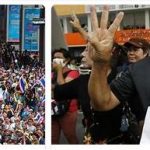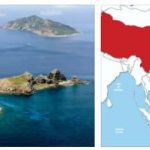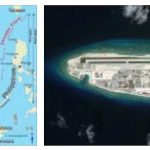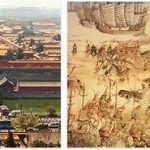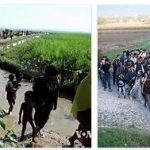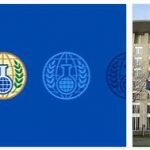Since 2001, there have been uprisings among Malay Muslims in southern Thailand, with more than 4,000 killed in total. Since 2008, Cambodian and Thai troops have been fighting five times over a border area in eastern Thailand, near the Preah Vihear Cambodian temple. Both soldiers and civilians have been killed. Since 2008, there have also been violent clashes between yellow shirts, red shirts and government forces in the capital Bangkok. The defeat of the red shirts in May 2010 cost ninety lives.
- Why has the “smiling” tourist country Thailand been so haunted by conflicts?
- Who opposes whom in the conflicts?
- What are the parties arguing about in the various conflicts?
2: Rebellion in the south
The border areas with Malaysia are only a short flight just south of Bangkok, but have little place in the capital’s consciousness. The population of the three provinces of Narathivat, Yala, Pattani and parts of Songkhla are mainly Malays . They speak Malay, are Muslims and have a lot of contact with the people on the other side of the border.
The majority in Thailand are Thai Buddhists . Malay Muslim activists remember the time when Patani was an independent kingdom, ruled by a powerful sultan. Some of them are fighting for national independence (their own state) with the help of roadside bombs, by shooting at soldiers and schoolteachers and murdering those who cooperate with the authorities.
Southern Thailand is not too far from the tourist areas on the west coast, those affected by the tsunami in 2004. But in southern Thailand there are no tourists. Only soldiers, police, roadblocks – and a civilian population suffering from the state of war. There could probably be peace in southern Thailand if the Malay Muslims gain the same degree of autonomy that the Indonesian province of Aceh gained through the peace agreement with the Indonesian government in 2005.
Historically, Aceh and Patani each formed their own powerful sultanate on opposite sides of the Straits of Malacca from the 17th to the 19th century. But the principle that Thailand is a unitary state remains sacred in Bangkok. It does not allow for local self-government.
3: Controversy over temples
On a cliff north of Cambodia, near Thailand, lies the temple of Preah Vihear . It is one of the many magnificent temples from the time when the Angkor kingdom dominated Southeast Asia. The memory of Angkor is overwhelming in the Cambodian national consciousness. The nation has a temple profile in its flag. The International Court of Justice in The Hague ruled in 1962 that Preah Vihear belongs to Cambodia, but the easiest access to the temple is from Thailand.
In 2008, UNESCO granted Preah Vihear World Heritage status. The Cambodians began to build a road there to open up for tourism. Thailand opposed this. Both countries sent troops to the border. It came to battle both then and later, with several killed, most recently in February 2011.
These struggles have become a serious threat to the cohesion of the Southeast Asian Cooperation Organization (ASEAN), which has been proud to have avoided war between its member countries since its inception in 1967. As mayor of ASEAN, Indonesia has been tasked by the UN Security Council to resolve Thailand and Cambodia.
4: Yellow shirts and red shirts
According to SUNGLASSESTRACKER.COM, Thai democracy has never been stable. Every time the country has a new constitution and a democratically elected government, it has not been long before the next military coup. The latest occurred on September 19, 2006, after the Thai Rak Thai party had won four consecutive elections. Thaksin Shinawatra was ousted after six years in power.
Thaksin has since been in exile. If he dares to return home, he now faces a two-year prison sentence. It was dismissed in 2008 for corruption. Much of the controversy in recent years has been between supporters and opponents of Thaksin. The yellow shirts are angry opponents. Their organization, the People’s Alliance for Democracy (PAD), was founded to fight Thaksin. Its leaders thought they had reached their goal with the coup in 2006, but the following year new elections were held, and Thaksin’s supporters won again.
Then the yellow shirts mobilized again and helped overthrow two Thaksin-friendly governments. The Yellows are strong in Bangkok’s middle class and have developed an increasingly pronounced power patriotism . Furthermore, they want the king to appoint large parts of the national assembly instead of it being elected by the people. They are also dissatisfied with the current anti-Thaksin government, led by Abhisit Vejjajiva of the Democratic Party . He thinks the yellow shirts are too awkward.
The majority of the people have always supported Thaksin. After the coup in 2006, they have formed a new party after the old one was banned. The fact that Abhisit’s government has the support of the National Assembly is due to the exclusion of the parliamentarians who support Thaksin. They are sentenced to stay away from all politics for five years.

